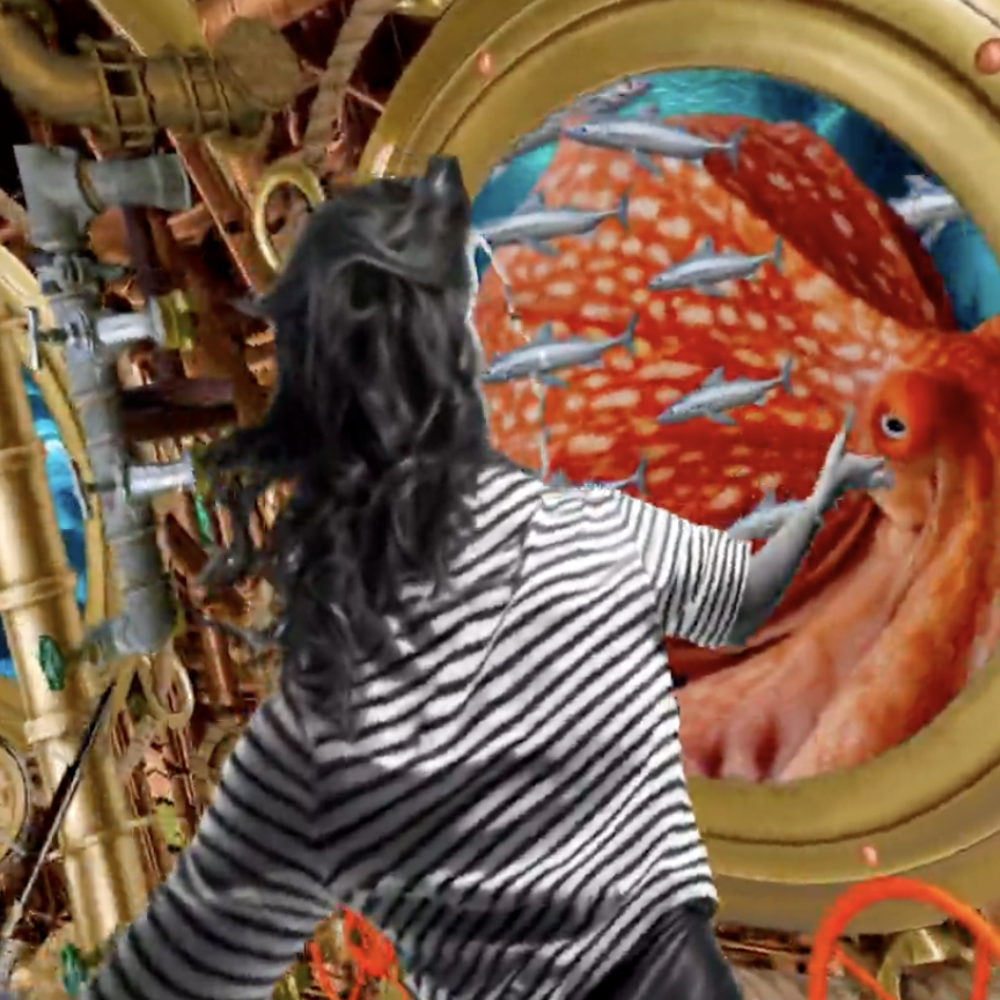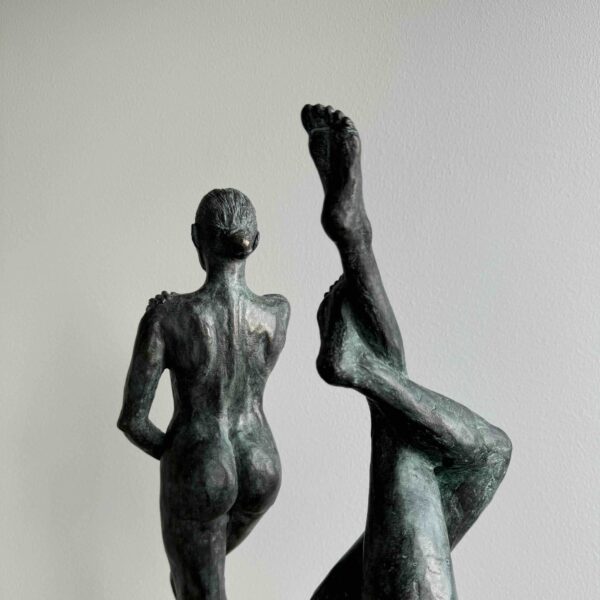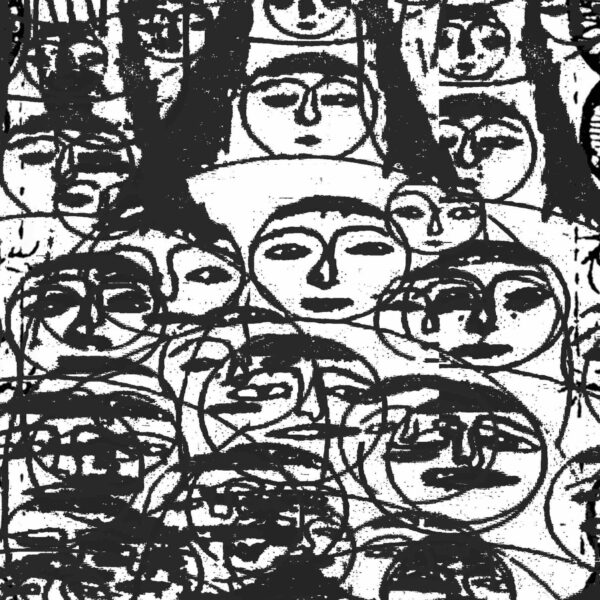Rebecca Rose: Domestic Myths and Digital Memory Palaces
In the layered, looped universes of Rebecca Rose, the home is never just a home. It’s a portal. A theatre. A pressure cooker. Her works—spatially collaged animations stitched together through digital, analog, and sculptural techniques—read like cinematic poems under duress. There are dolls and drills, memes and meat, shadows and saints. But above all, there is structure, and within it, chaos.

Rebecca Rose is a Florida-based, award-winning new media artist whose practice synthesizes personal memory, feminist critique, and 21st-century folklore into immersive time-based artworks. Her background spans traditional sculpture and experimental digital animation, with a BFA from Northern Arizona University (cum laude), and residencies at Ox-Bow/SAIC and the Joan Mitchell Center. She’s received support from the Warhol, de Kooning, Rauschenberg, Mellon, and Bloomberg foundations, and has exhibited globally, from the Whitney Museum to MKG Hamburg, to Christie’s.
Her digital works, especially those in her DeepCuts and Tragic Kingdom series, layer found imagery and historical tropes into recursive video collages—densely symbolic and charged with cultural memory. There’s a humor in them, yes, but it cuts deep. And now, with her upcoming 1/1 work The Hymn to Kansas Kidd, Rose pushes her thesis even further: that the American domestic dream was always a haunted house.
Carpe GM
“By seizing the memes of production…”
In Carpe GM, Rose riffs on the idea of industrialized identity. Set in a nightmare assembly line populated by workers with mechanical apertures for faces, the video collage unfolds like a fever dream of techno-labor. Babies roll down conveyor belts, disembodied limbs emerge from ducts, and gears grind behind smiling uniforms.
There’s a political undercurrent here, both in its nod to Marx and in its aesthetic DNA drawn from Dada and Surrealist photomontage. But what anchors it is the sonic and rhythmic pacing. Edited to a 19th-century military march sourced from the Library of Congress, Carpe GM stages the absurdity of capitalist reproduction as both spectacle and sermon. It’s a digital sermon for Web3, where memes replace manifestos and solidarity arrives in syncopated beats.
The Court of Public Opinion
“Everyone has their opinion—and isn’t afraid to show it.”
Originally created for the AiR I curated collection – the culminating sale of the first cohort of AOTM’s Artist in Residence program – this piece zooms in on the mechanics of spectacle, particularly where morality is manufactured. The work unfolds outside a courthouse, where a faceless media frenzy surrounds a central figure adorned in fur and glamour. Journalists, paparazzi, and politicians melt into the same composite organism, their faces replaced with lenses, hedges, or empty screens.
Rose critiques not just the legal system, but the theater that surrounds it. We don’t know the verdict, only the performance of response. It’s not justice that’s on trial here, but the public’s desire to be seen believing something. In a moment when reputation precedes evidence and virality overpowers nuance, The Court of Public Opinion becomes a cautionary tale staged in glamorous decay.
Cuckoo Clamber
“A mountaintop selfie at the edge of civilization.”
Here, Rose directs our attention to the commodification of nature. A mountaintop becomes a theme park attraction, where climbers pose for selfies, drop trash, and disturb mythical yetis mid-play. There’s humor (especially in the multilingual warning to “remain seated, please”), but also an undercurrent of lament.
Presented in multiple aspect ratios and built as a panoramic loop, Cuckoo Clamber evokes the feeling of being stuck in a tourism ad for a world on fire. It’s part of her “Tragic Kingdom” series, and its genius lies in its contradictory structure: a digitally composed spectacle warning us against spectacle. Nature, here, is a set: and we are both performer and pollutant.
The Engines Hum For Nobody
“Dive, dive…”
Set in a steampunk undersea world, this loop captures a submarine mid-catastrophe. Strano-esque in its architecture but hyper-saturated in its collage logic, The Engines Hum For Nobody charts the fatal arrogance of human conquest, especially that of worlds not built for us.
Characters float inside the hull, their military uniforms distorted by panic and propulsion. Fishes drift by indifferently as pipes burst and hatches scream. Here, power becomes theater again, echoing The Court of Public Opinion, but submerged. It’s nationalism at the bottom of the ocean.
Soundtracked and mixed by the artist herself (with AI support), the piece plays like a wrecked documentary, one that never made it back to the surface.
The of Hymn of Kansas Kidd
“And lo, the nuclear family knelt before its own undoing.”
In The of Hymn of Kansas Kidd, Rebecca Rose turns the volume up on her domestic surrealism. This is her latest 1/1, and possibly her most disturbing. Structured in four scrolling tableaux—suburban garden, bedroom, kitchen, and pantry—it moves like a living diorama of American collapse. Norman Rockwell reanimated by Maya Deren.
In the first scene, a family picnics in saturated spring bloom, smiling as they hold a frog, a Bible, a sandwich. Their faces are cut out, hollowed. It’s kitsch rendered sacred. But in the second scene, horror erupts. Blood pools beneath a matriarch’s corpse, the bed still made, the children still watching.
The next rooms reveal the aftermath: smashed glass, bloody pawprints, collapsing order. But there’s no resolution. No explanation. The hymn plays on.
The of Hymn of Kansas Kidd is a masterclass in tonal dissonance. Where her earlier works critique structures through metaphor and rhythm, here Rose weaponizes beauty itself. The image is too rich, too cheerful, too alive… which only makes the violence land harder. This is not satire. It’s memory and trauma rendered in 3D collage.
A Domestic Horror Opera in Loops
Rebecca Rose’s work insists that no image is neutral. Every spoon, shoe, sofa, and smile contains the stuff of politics: histories, weapons, positions. Her collages transcend pastiche, becoming forensic architecture.
By blending analog textures with digital fluidity, she opens up a new language of critique, one grounded in memory, charged by femininity, and sharpened through repetition. And with The Hymn of Kansas, she adds a final, unforgettable verse.
This is not backwards-looking nostalgia, it’s the post-eventaftermath. The hymn has only just begun.


